E4.350 – World’s largest polymer energy chain at 140m in operation for over 10 years
dklein | 2. June 2021
Our E4.350 energy chain from the E4.1 series is the world’s largest polymer energy chain and has been in operation in Antwerp for over 10 years on a travel of 140m and a fill weight of more than 100kg without any failures. We will explain how this project was accomplished in today’s blog post.
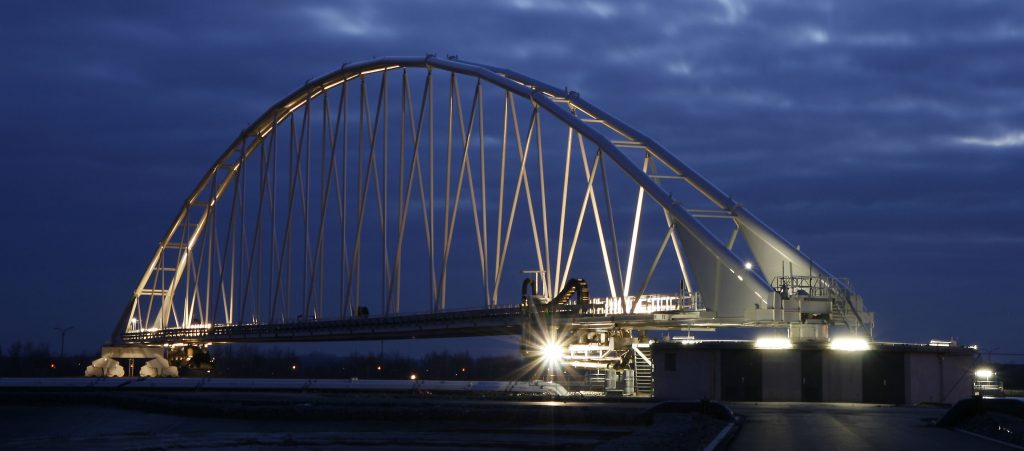
Anyone travelling to Antwerp by car will see it from afar on the motorway: the world’s largest polymer energy chain, the E4.350 from igus. At a silt processing plant near the harbour, the e-chain has run on a huge arch-shaped bridge since the end of 2010. The world’s largest plastic energy chain to date is used to safely guide the heavy movable hoses on the bridge. It guarantees the required long service life of the entire system despite the enormous filling weights. During the design of this large-scale project, the plant constructor and component supplier worked together successfully from day one.
The problem
The harbour in Antwerp is the largest port of its type in Belgium. In 2020 alone, more than 231 million tonnes of freight were handled. In order for the huge container ships, among others, to be able to unload their cargo without any problems, the shipping lanes must always be clear. For this purpose, the navigation channels are dredged and enlarged with special vessels. As the space available for storing the dredged sediments continued to shrink over time, the port authority and the Flemish government decided to invest in a modern silt drainage system as part of the ambitious project “AMORAS”, (Antwerpse Mechanische Ontwatering, Recyclage en applicatie van slib).
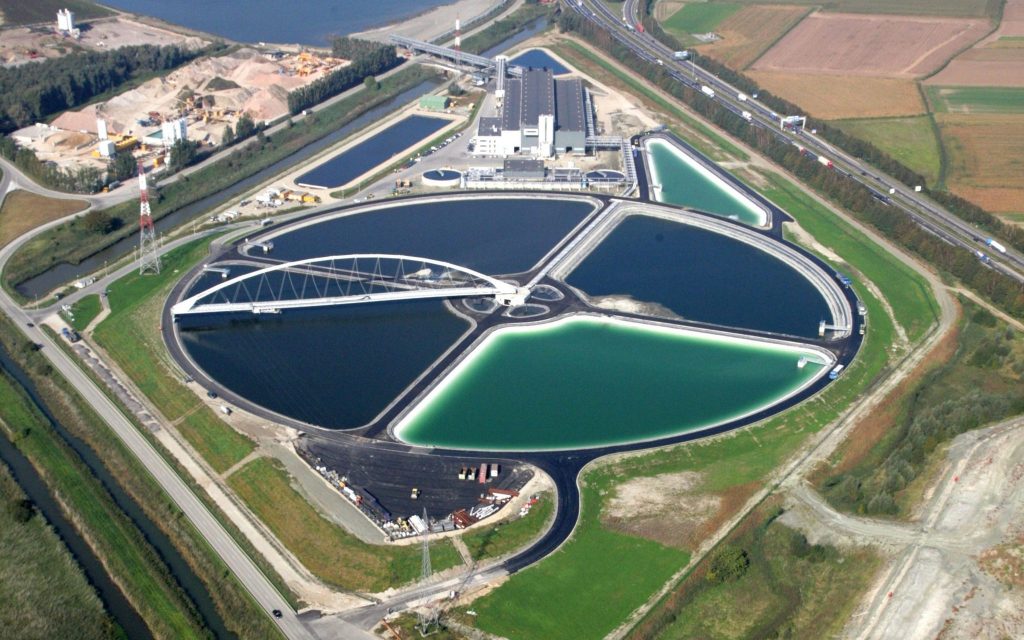
The coarsely sorted sediments – around 500,000 tonnes per year – are therefore now pumped through a pressurised pipeline to the plant 4km away, where they are mechanically drained, processed in an environmentally sound manner and then stored. The central component of the silt treatment plant is an imposing arch-shaped bridge with a span of around 180m in the outer area. Two movable, autonomously operating high-performance pumps are attached to the bridge, which can be rotated through 360°. The dredge pumps suck about 600m of sediment or silt per hour from the sedimentation basin below and transport it via enormous hoses with a diameter of 300mm for further treatment. A robust solution had to be found for the energy supply to the pumps that could cope with the dimensions of the project. All the central components of the huge plant had to be designed for a minimum service life of 15 years. However the requirement profile becomes even more complex. The drainage system has been in operation for about 365 days a year, almost without interruption. Operational safety comes first. There must be no unnecessary maintenance and downtime.
The solution
Today, an extremely robust polymer chain from igus GmbH is used to safely guide the hoses of the system over the entire travel. This is the maintenance-free E4.350 model that is openable from both sides and is part of the exceptionally robust E4.1 series that has proven itself in countless applications. It also shows its versatility in composting and sewage treatment plants, tool and construction machinery, crane technology and wood processing.
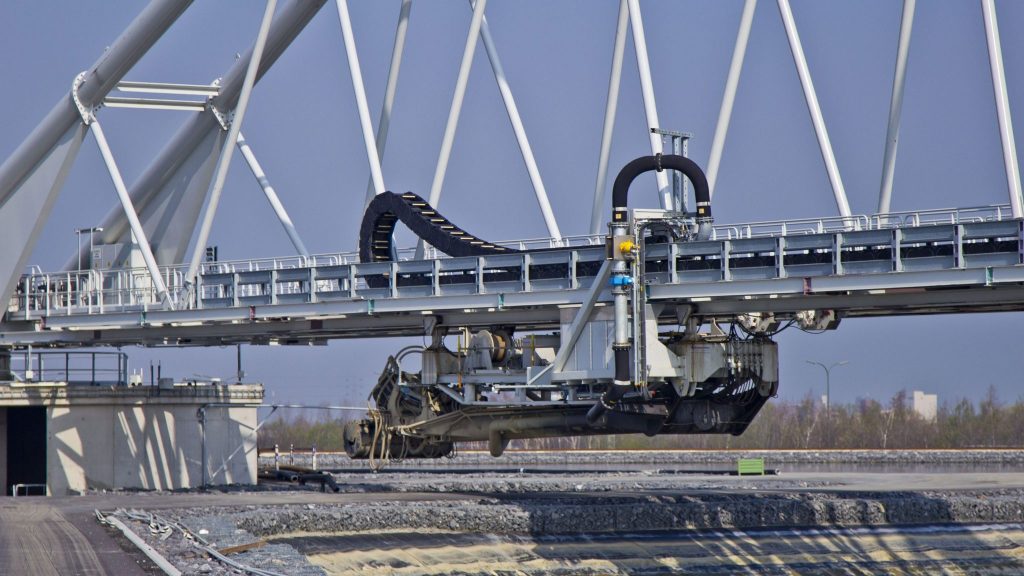
with the pivoting arm folded in. Clearly visible: The connection
of the hose system and the gliding energy supply chain
including guide trough.
The E4.350 with an inner height of 350mm and inner widths of up to 800mm is the largest plastic energy chain in the world to date. In the most demanding “heavy-duty” applications, it can easily guide heavy and, if required, stiff fill weights and is sometimes highly wear-resistant, corrosion-free as well as resistant to oil and seawater. In order to minimise the rolling resistance, sliding rollers made of the tribo-optimised plain bearing material iglidur, which displays its strength in the most diverse applications, prove themselves as a special design on the crossbars. The friction of the hose in the chain is significantly reduced and stability is guaranteed.
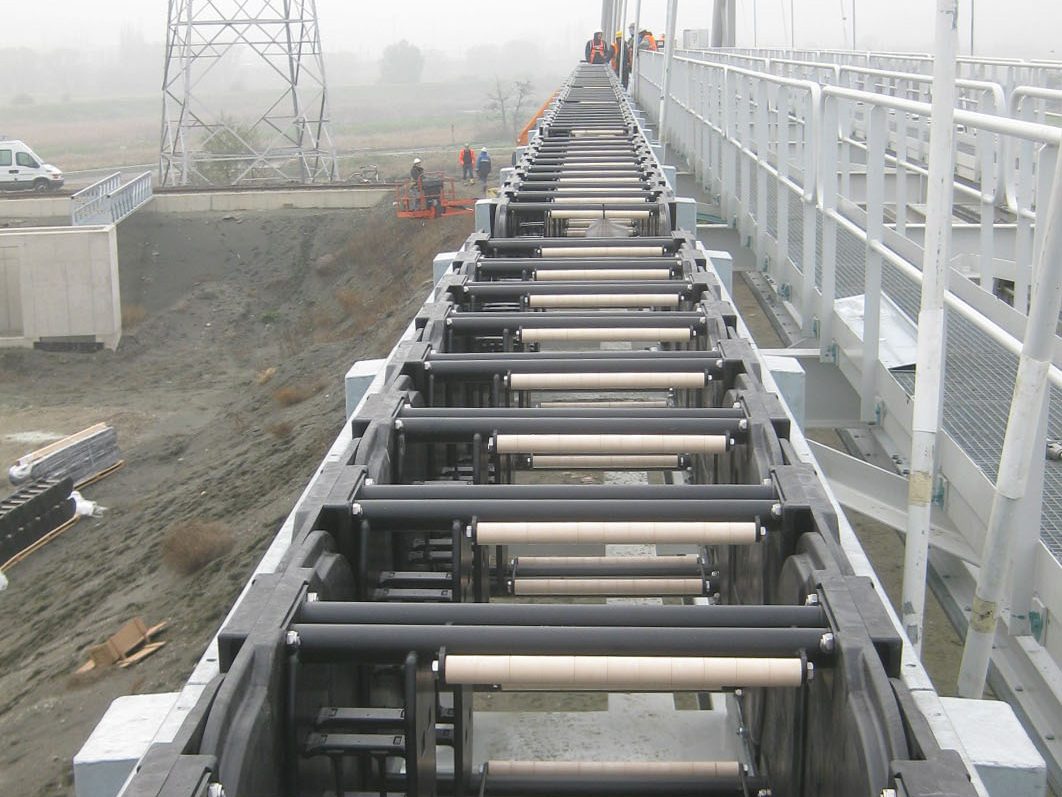
The additional interior separation for power and signal cables as well as
the crossbars with friction-reducing iglidur rollers for
gentle movement of the hose.
In addition to the energy supply system, a corrosion-free guide trough and floating moving ends are used. They serve to compensate for any lateral offset tolerances. The energy chain filled with hoses and cables is always safely guided along its entire length in wind and weather. Despite the difficult operating and environmental conditions, there have been no failures even after 10 years. For reasons of operational safety of the bridge construction, the system builder also decided to invest in an electronic monitoring unit. The diagnostic tool iSense EC.P (push/pull force detection) of the smart plastics product family, which has proven itself very well on long travels, measures the push/pull forces of the energy chain online every four seconds and compares them with a calculated target specification. If malfunctions occur, the system can be stopped automatically with the help of the diagnostic tool in order to prevent damage.
Convincing project competence
The decision for the comparatively light plastic energy supply system was quickly made. Both companies have worked together in a spirit of trust on the engineering process from day one. On the one hand, this concerns the complex design process of the bridge construction. A variety of design drawings have been made available in an uncomplicated manner, depending on the project status. On the other hand, the extensive laboratory tests that took place beforehand were also convincing. “The sustained support for this major project has led to success”, says Joury van Gijseghem. “We managed this project together from the first to the last day.”
The plant manufacturer also made use of the expertise in assembly. The specialist for energy supply systems has set up the entire system, which has been completely installed on schedule by its own employees at the construction site. The system has been operating smoothly from day one. “We have never regretted the decision to use the plastic energy supply system”, concludes Joury van Gijseghem. “Furthermore, it was worthwhile for us to involve the system supplier in the project right from the start. This way, mistakes could be minimised right from the start.”
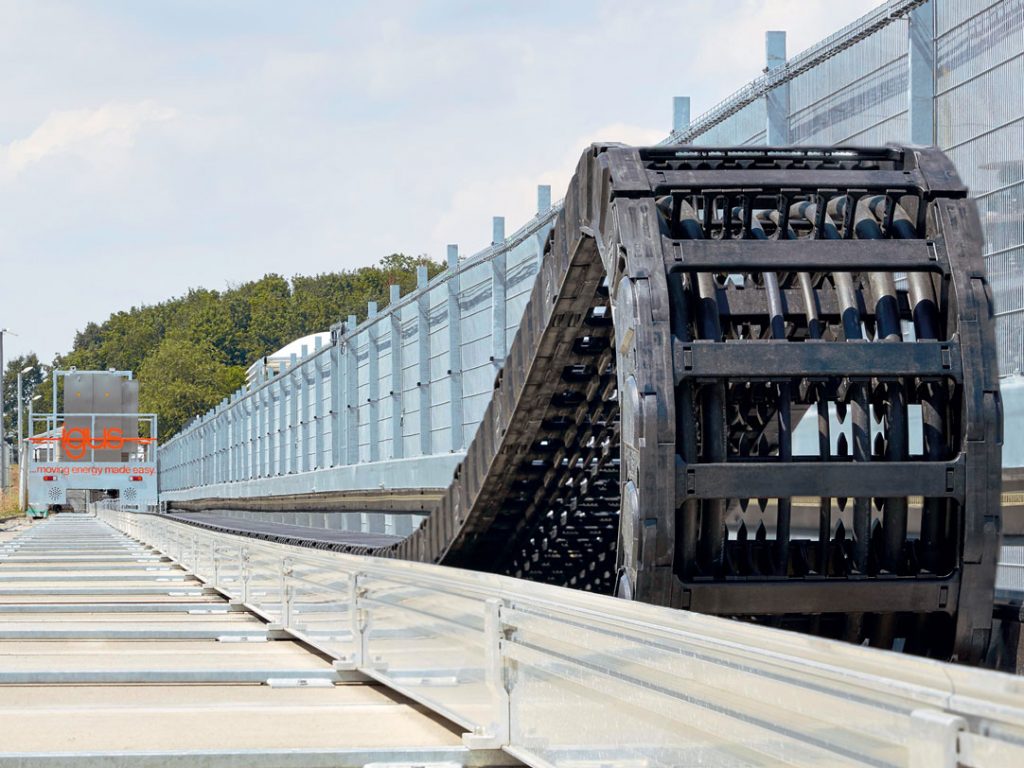
Advantages of the energy chain system at a glance:
- Lower weight due to plastic construction of the chain compared to steel chain, significantly reduces push/pull forces and drive power, and even reduces static load
- Own new chain size including rollers and special crossbars developed, engineered, tested, assembled and serviced by igus for the special application, in use for over 10 years without failures despite special solution.
- Predictive maintenance for more safety and transparency (remote diagnosis) with the help of igus smart plastics (Industry 4.0)
- Everything from a single source with igus guarantee
Discover more projects in our information section for e-chain project planning or visit our project highlights directly from the engineering section. Do you have a project and need support? Here you can directly find our contact form.
On our igus blog, you will also find more interesting topics about energy supply systems, bearing technology, linear technology, 3D printing and Low Cost Automation.
